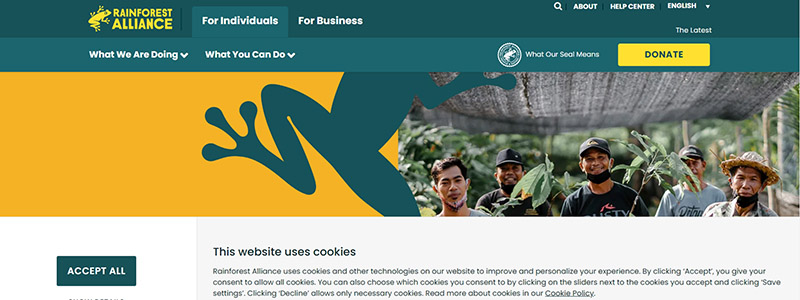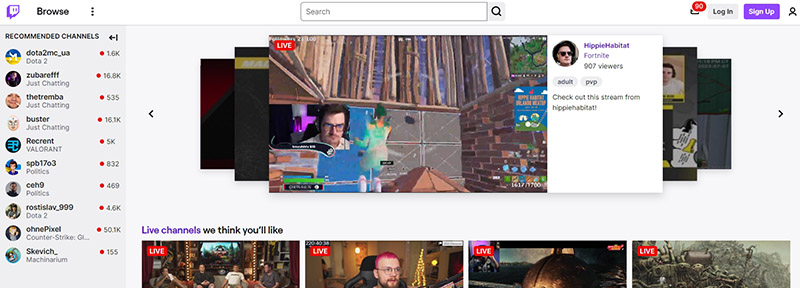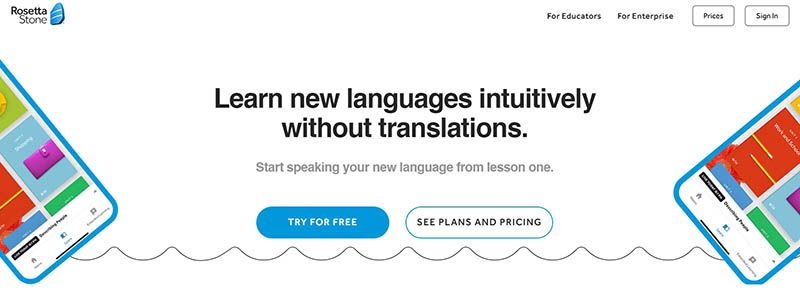Dive into the dynamic universe of marketing strategy with our handpicked compilation of the finest 12 examples. At the heart of every successful campaign lie potent strategies that wield the power to transform bland pitches into brand phenomena. With a heavy focus on sectors like e-commerce, digital media, and software services, our article provides insights into:
- Influencer collaborations
- Content marketing
- Social media campaigns
- Event promotions
- And eight more exciting strategy examples.
Grasp the essence of these robust marketing tactics, let them stimulate your creativity, and watch as your campaigns outshine the competition. You may achieve and surpass your marketing goals with this arsenal of marketing methods.
Furthermore, we’re pleased to introduce you to Plerdy – a groundbreaking tool to streamline your SEO and UX efforts. Your productivity escalates as you leverage Plerdy’s innovative features to optimize your marketing ventures. Go beyond just marketing strategy examples; it’s time to own your marketing domain with Plerdy truly! Knowledge is only half the battle; apply these strategies in your marketing plan to witness real growth. Happy strategizing!

Introduction to the Importance of Marketing Strategies
Diving into the realm of marketing strategies offers businesses the roadmap to customer engagement and business growth. As marketers expertly navigate this path, they transform abstract goals into concrete results. From boosting brand awareness to driving sales, every strategy is a powerful engine that propels the business forward.
Three prime examples of marketing strategies delivering stellar outcomes include:
- Content marketing in the wellness sector, where relatable health stories and actionable tips engage and educate consumers.
- Social media marketing in fashion, where interactive, style-savvy posts capture the eyes of trendy millennials.
- Direct marketing in the software industry, where personalized email campaigns offer tailored solutions to customers.
Each strategy, customized to fit a specific niche, enables marketers to resonate with their audience, ignite interest, and instigate action—a chain reaction that sparks business success. By leveraging the right mix of marketing strategies, businesses craft a customer journey that nurtures relationships, boosts loyalty, and, ultimately, fuels growth.
Main Types of Marketing Strategies
In today’s competitive market, businesses must employ various marketing strategies to stand out and attract customers. These strategies range from traditional advertising methods to modern digital techniques. Each strategy offers unique advantages and can be tailored to meet a company’s specific needs and goals. Below is a table highlighting ten effective marketing strategies, a brief description and an example of successful implementation. Understanding and leveraging these strategies can significantly enhance a company’s market presence and customer engagement.
| Marketing Strategy | Description | Example of Successful Use |
|---|---|---|
| Content Marketing | Creating and distributing valuable content to attract and retain a target audience. | HubSpot has a blog and resources for marketers. |
| Social Media Marketing | Using social media platforms to promote products and engage with customers. | Coca-Cola with campaigns on Instagram and Facebook. |
| Email Marketing | Sending personalized emails to maintain contact with customers and drive sales. | Amazon with personalized product recommendations. |
| Search Engine Optimization (SEO) | Optimizing content to improve its ranking in search engine results. | Moz with continuous improvement of its blog for high Google rankings. |
| Pay-Per-Click (PPC) Advertising | Paid advertising that appears in search engine results or on platforms. | Google Ads with targeted advertisements. |
| Influencer Marketing | Collaborating with popular individuals to promote products. | Daniel Wellington with partnerships with popular bloggers. |
| Video Marketing | Using video content to engage the audience and promote products. | Dollar Shave Club with its viral product videos. |
| Event Marketing | Organizing and participating in events to increase brand awareness. | Apple with annual product launch events. |
| Affiliate Marketing | Partnering with other companies to mutually promote products. | Amazon with its Amazon Associates affiliate program. |
| Guerrilla Marketing | Using unconventional and creative methods to attract attention. | Red Bull has stunts and unique events like Red Bull Stratos. |
By exploring and implementing these marketing strategies, businesses can find the most effective ways to reach their audience and achieve their goals. Whether through engaging content, impactful social media campaigns, or innovative guerrilla tactics, each strategy offers different pathways to success. It is important to analyze and adapt these strategies based on the evolving market trends and consumer behavior. This approach ensures that marketing efforts are efficient and resonate well with the intended audience, leading to sustained growth and brand loyalty.
The Importance of Marketing Strategies in Business

Business success hinges on mastering the art of marketing strategy. This multifaceted discipline, applied skillfully by marketers, serves as a bridge connecting a business’s products or services to its customers. A dynamic blend of research, creativity, and data-driven decisions, marketing strategy, weaves a potent narrative that captures customer attention, fuels engagement and drives conversions.
Consider these three distinct marketing strategy examples that have amplified business growth:
- Event Marketing in the tech industry, where memorable product launches catapult brand visibility and product adoption.
- Mobile Marketing in e-commerce, where personalized notifications spark immediate purchases.
- Affiliate Marketing in the travel sector, where partnerships with influencers drive traffic and bookings.
When implemented astutely, these strategies create a ripple effect. They capture the customer’s attention – the first vital step in their journey. Then, they foster a deeper relationship by providing value and engaging meaningfully. This ultimately nudges the customer to take desired actions, whether purchasing, signing up for a service, or becoming a brand ambassador.
A robust marketing strategy, perfectly tailored to the business’s goals and the customer’s needs, is not just a growth driver–it’s the lifeblood of sustainable business success.
Spotify: Offer a Different User Experience

Spotify, a titan in the music streaming industry, capitalizes on delivering a distinct user experience through its exceptional marketing strategy. The company doesn’t just present users with a vast music library—it crafts a unique, tailor-made musical journey for each listener.
This strategy manifests in several innovative features:
- Custom Playlists—Each week, Spotify uses its advanced algorithms to generate ‘Discover Weekly,’ a playlist of songs that mirror users’ musical tastes but haven’t been played by them before.
- Spotify Wrapped—An annual, detailed infographic that gives users a fun, informative rundown of their listening habits. It shows top artists, songs, genres, and even the total time spent on the app.
- Social Sharing—Users can seamlessly share their favorite music, playlists, and Spotify-wrapped statistics on their social media channels, creating a vibrant, interactive community of music lovers.
Through strategic partnerships and exclusive content—like Spotify Singles or high-profile podcasts—Spotify adds another layer of exclusivity to its user experience. These innovative strategies cater to the users’ desire for fresh, personalized content, fostering stronger connections between the company and its user base.
By creating a vibrant, engaging, and personalized experience, Spotify ensures it remains the go-to streaming service for its listeners. This focus on customer experience drives customer retention and amplifies Spotify’s brand image and business growth. Thus, Spotify’s marketing strategy is a powerful example of user-centric innovation.
GoPro: Trust User-Generated Content

GoPro, a leading name in adventure cameras, has brilliantly used user-generated content for its marketing strategy. The company leverages customers’ authentic experiences, creating a sense of community while boosting its business.
Consider the following facets of GoPro’s strategy:
- GoPro Awards—The brand encourages customers to submit their best adventure videos and photos. Exceptional entries are then rewarded and featured on GoPro’s official channels, fostering a sense of competition and engagement within the GoPro community.
- Social Media Presence—GoPro extensively shares user-generated content on its social media platforms. This authentic showcasing of real-life adventures with GoPro cameras resonates with the audience, leading to higher engagement and brand visibility.
- Partnerships with Adventurers—GoPro partners with adventure sports enthusiasts and influencers. They capture their thrilling experiences using GoPro cameras, promoting the product’s capabilities in real-world scenarios.
The cornerstone of GoPro’s marketing strategy is positioning customers as consumers and marketers. This approach’s brilliance lies in the authenticity of the content and the raw emotion captured in it, which traditional marketing might struggle to emulate.
GoPro’s strategy is a powerful example of how businesses can leverage user-generated content to build a strong, engaged community and promote their products authentically and compellingly. It’s a testament to the importance of trusting the customer as part of a successful marketing strategy.
Sephora: Loyalty programs

Sephora, a recognized name in beauty retail, has expertly woven customer loyalty programs into its marketing strategy. This initiative magnifies brand appeal while stimulating business growth.
Take note of these aspects of Sephora’s approach:
- Beauty Insider Program: Sephora cultivates customer loyalty through its tiered rewards program. Patrons earn points for every dollar spent, which can be redeemed for products. The three tiers—Insider, VIB, and Rouge—offer escalating perks, incentivizing repeat purchases.
- Sephora Credit Card: With its branded credit card, Sephora extends customer loyalty into the financial sphere. Cardholders receive exclusive benefits and rewards, thereby intertwining financial and retail experiences.
- Exclusive Product Access: Sephora’s program provides early access to products for higher-tier members, instilling a sense of exclusivity and elevating the shopping experience.
Sephora’s strategy spotlights customers as the nucleus of its business operations, rewarding them for their loyalty. This approach’s genius lies in its capacity to transform casual shoppers into brand advocates, amplifying both customer satisfaction and sales.
The beauty retailer’s strategy provides a shining example for businesses seeking to embed loyalty programs within their marketing strategy. It exemplifies the substantial impact of rewarding customers for their commitment and its integral role in crafting an outstanding marketing strategy.
Nike: Promote Your Values

Nike, the athletic apparel giant, weaves its core values into every facet of its marketing strategy, creating a strong brand connection with its customers. Promoting ideals that resonate with its target audience is the company’s success.
Here’s a glimpse into how Nike infuses values into its marketing strategy:
- ‘Just Do It’ Campaign: Nike’s iconic slogan empowers customers to overcome challenges, echoing the brand’s values of perseverance and determination.
- Partnership with Athletes: Nike strategically partners with top athletes who embody the brand’s values. This reinforces Nike’s position as a premium, performance-oriented brand.
- Sustainability Initiatives: Nike’s dedication to sustainability is evident in its ‘Move to Zero’ initiative, targeting zero carbon and waste to protect the future of sport.
- Community Engagement: Nike actively engages with communities, implementing programs like ‘Made to Play’ to get kids active.
Nike’s marketing strategy manifests the power of value-based marketing. By putting its values front and center, Nike establishes a robust connection with its customer base. This relationship extends beyond transactions, fostering a community of brand advocates who align with Nike’s vision.
Nike serves as a compelling example for marketers crafting their strategies. The company’s emphasis on values sets it apart, fortifying its reputation and cultivating a loyal customer base. The business lesson is clear: when your brand stands for something, your marketing strategy benefits from that strong foundation.
Nordstrom: Retargeting campaigns

Luxury retailer Nordstrom harnesses the power of retargeting campaigns, masterfully re-engaging customers who’ve shown interest in their products but haven’t purchased them. This strategy aims to keep Nordstrom top-of-mind for potential customers, steering them back towards a purchase.
Here’s how Nordstrom executes their retargeting strategy:
- Detailed Product Display: Nordstrom’s ads showcase the products a customer previously viewed, creating a personalized shopping experience that nudges the customer towards buying.
- Cross-Platform Engagement: Nordstrom implements its retargeting strategy across various platforms – social media, search engines, or other websites – ensuring brand visibility wherever the customer navigates.
- Limited Time Offers: Nordstrom’s retargeting ads occasionally feature limited-time offers or discounts on previously viewed items, adding a sense of urgency to prompt a purchase.
- Abandoned Cart Reminders: Nordstrom sends reminders to customers who leave items in their online shopping cart—a classic, effective retargeting move to spur purchase completion.
This strategy exemplifies how Nordstrom prioritizes customer re-engagement, resulting in increased conversions and business growth. For marketers, Nordstrom’s approach provides a clear roadmap for leveraging retargeting campaigns effectively, reminding us that the customer journey doesn’t end with a single site visit. Instead, marketers can – and should – implement strategies to pull interested customers back, turning near-misses into confirmed sales. This successful remarketing technique shows Nordstrom’s capacity to adapt and survive in a digital retail landscape.
Rainforest Alliance: Be Supportive

The Rainforest Alliance brilliantly integrates supportiveness into its marketing strategy. This nonprofit organization advocates for the sustainable livelihoods of farmers, foresters, and tourism businesses worldwide. Its strategy combines advocacy with business advancement, emphasizing the mutual benefits of environmental stewardship.
Rainforest Alliance’s supportive marketing strategy unfolds as follows:
- Emphasizing Partnership: They don’t just certify businesses. They form partnerships, providing continuous support, resources, and training for sustainable practices. This collaboration-centric approach reinforces their supportive image.
- Sharing Success Stories: By highlighting partnered businesses’ achievements, they validate their initiatives’ effectiveness while inspiring other businesses to join their cause.
- Harnessing Social Media: Through informative posts, they educate followers about sustainable practices, fostering a community of individuals passionate about conservation.
- Inviting Collaboration: They run fundraising campaigns, inviting supporters to contribute, underlining the collective effort necessary to effect change.
This supportive marketing strategy amplifies the Rainforest Alliance’s voice, mobilizing a community of businesses and individuals eager to champion their cause. It’s a win-win scenario that every marketer can learn from, as the Rainforest Alliance supports sustainable businesses, boosting its conservation mission.
This example underlines the potency of marketing strategies that prioritize mutual support and community building. Such approaches advance business interests and drive societal change – a fulfilling accomplishment for any organization. This case study gives marketers valuable insights into devising strategies that cater to business growth and positively impact broader global causes.
Twitch: Focus on Your Niche

Twitch, the powerhouse live streaming platform, has nailed niche-specific marketing with aplomb. Focusing on the gaming community, Twitch has transformed live streaming into a thriving, interactive universe where gamers engage in real-time. Their marketing strategy thrives on immersion, making users part of a tight-knit, vibrant community.
Here’s the breakdown of Twitch’s unique marketing strategy:
- Exclusivity: Focusing on the community, Twitch has crafted a unique platform that addresses gamers’ needs – from viewing live gameplay to interacting with gaming influencers.
- Streamer Support: Twitch provides various monetization opportunities for streamers, nurturing a pool of content creators invested in the platform’s growth.
- Community Events: TwitchCon, an annual fan convention, fosters community spirit, allowing gamers to connect offline.
- Partnerships and Sponsorships: Collaborating with gaming companies for exclusive content, Twitch creates a demand among its users for particular games.
Twitch’s savvy niche-specific marketing strategy propels its business by providing the gaming community with a dedicated interaction and content consumption platform. This strategy offers a significant takeaway for marketers: catering to a specific community’s needs can cultivate a passionate, engaged customer base.
Understanding a niche audience’s interests and aspirations and aligning your business strategy to meet these needs can foster customer loyalty and drive business growth. Twitch’s success embodies this principle, demonstrating the power of niche-specific marketing in carving out a dominant market position.
Chipotle: Launch Original and Fun Contests

Known for its fresh, made-to-order Mexican cuisine, Chipotle doesn’t hesitate to spice up its marketing strategy with original, fun contests. These interactive campaigns strengthen customer relationships, grow brand awareness, and ultimately increase revenue.
Let’s dive into the main ingredients of Chipotle’s contest-based marketing approach:
- The Recipe for Engagement: Chipotle hosts creative contests that directly engage customers. For instance, their ‘Dress in Foil’ competition rewards the best costumes with free burritos, fostering an interactive brand experience.
- Storytelling on Social: Chipotle promotes contests that require user-generated content, such as photos or videos, using platforms like Instagram. This user content amplifies their reach and paints vivid brand stories online.
- Blend of Prizes: Rewarding participants with more than just a free meal, Chipotle often surprises with unique offerings, like a year’s burritos or VIP festival tickets. These tantalizing prizes stir interest and incentivize participation.
Chipotle taps into the power of play through these contests, fostering a fun-loving image while engaging its customer base. This ingenious marketing strategy resonates with their younger demographic and establishes Chipotle as a brand that values customer interaction.
For marketers, Chipotle’s contest-based approach demonstrates the potential of interactive campaigns. When your business crafts an engaging and fun marketing strategy, you build a strong customer relationship while amplifying brand awareness.
Take a page from Chipotle’s book: Engage customers with contests that speak to their interests, create a unique brand experience, and offer worthwhile rewards. This approach can create a marketing strategy that keeps customers returning for more, just like a delicious Chipotle burrito.
Rosetta Stone: Get Creative

Rosetta Stone shines bright in language learning software with a marketing strategy that places creativity on a pedestal. An audacious mix of innovative campaigns, engaging content, and timely collaboration defines their modus operandi. This approach increases customer interaction and elevates the brand’s status in a crowded marketplace.
Here’s how Rosetta Stone ignites creativity in its marketing:
- Breaking the Language Barrier: Rosetta Stone eschews traditional advertisement formats, opting for interactive webinars and live sessions that allow potential customers to experience their product firsthand.
- Riding the Hashtag Wave: Deftly using social media, they craft trend-surfing hashtags that stir curiosity, spark conversation, and drive online engagement.
- Fusing EdTech and Pop Culture: By collaborating with renowned celebrities and influencers, Rosetta Stone merges learning with entertainment, drawing in a broad audience demographic.
Rosetta Stone’s strategy is ingenious because it breaks free from the confines of conventional marketing, enabling it to reach and resonate with a wider audience. This approach is a shining beacon for businesses and digital marketers seeking to differentiate themselves.
In your marketing strategy, embrace creativity like Rosetta Stone. Dare to disrupt standard advertising formats, leverage the power of social media, and consider strategic partnerships that align with your brand. When you sprinkle creativity throughout your marketing, you stand to engage customers more deeply, elevate your brand, and drive business growth. Much like deciphering ancient scripts, exploring the boundaries of creativity can lead to profound revelations in the marketing landscape.
Red Bull: Putting identity before products

Red Bull has set the bar high in the energy drink industry with a marketing strategy that champions brand identity over product promotion. The bold Austrian company has focused on creating a dynamic image that resonates with the adrenaline-seeking customer base.
Red Bull’s approach includes:
- Sponsoring High-Octane Events: From cliff diving to snowboarding competitions, Red Bull hosts and sponsors extreme sports events worldwide, reinforcing their ‘gives you wings’ mantra.
- Publishing Exciting Content: Red Bull Media House produces high-quality, heart-thumping content – thrilling sports documentaries, music festivals, and even a dedicated TV channel – to amplify the brand’s daring image.
- Supporting Athletes: Sponsoring professional athletes and aspirants is a cornerstone of Red Bull’s strategy, fostering a strong bond with its adventure-driven audience.
This identity-first marketing strategy has granted Red Bull unparalleled recognition, resulting in a loyal customer base and phenomenal business success. The brand’s essence is communicated consistently across all marketing channels – energy, excitement, and the zeal to push boundaries.
Marketers and businesses could take a page from Red Bull’s playbook. Before selling products, sell an image, a lifestyle, an identity. Immerse customers in a narrative that connects with them on a deeper level. Emulating Red Bull, strategize to brand first and sell second – a compelling identity can carry your products a long way.
Heineken: Become a Sponsor

When establishing a vibrant brand presence, Heineken’s marketing strategy truly shines. This global beer company is a top-tier example of sponsorship’s profound impact on brand recognition and customer engagement.
In Heineken’s strategy, three sponsorship methods stand out:
- Sports Sponsorship: Heineken has been a long-standing sponsor of the UEFA Champions League, connecting with the passionate football audience and leveraging the platform to launch unique ad campaigns.
- Music Festivals: By sponsoring major music events like Coachella and Ultra Music Festival, Heineken broadens its reach to a music-loving, vibrant demographic.
- Social Initiatives: Sponsoring socially responsible events and initiatives aligns Heineken with worthwhile causes, improving public perception and customer loyalty.
Through these ventures, Heineken doesn’t just promote its product; it aligns itself with experiences and emotions that customers cherish, creating a powerful bond with its customer base. The brand’s consistent presence in customers’ favorite events solidifies its position in their minds – an essential outcome of any successful marketing strategy.
Consider Heineken’s approach for businesses and marketers seeking to bolster their brand. Seek sponsorship opportunities that resonate with your target audience’s passions and values. Doing so allows you to reach your customers in an environment where they’re most receptive, building positive associations with your brand. Remember, sponsoring isn’t just about plastering your logo everywhere—it’s about creating meaningful connections with your customer base.
Segway: Failed to identify pain points

Segway’s tale is a striking example of a marketing strategy straying from a crucial principle—identifying customer pain points. Despite its technological breakthrough, Segway failed to address practicality, price, and safety, causing its demise.
Segway’s shortcomings center around three main issues:
- Practicality: While Segways were marketed as a revolution in personal transport, many cities weren’t equipped to accommodate them, rendering them impractical for everyday use.
- Affordability: Segways were too expensive for most people, which prevented mass acceptance.
- Safety: Segways were criticized for being difficult to control, leading to numerous accidents and a negative safety reputation.
Marketers and businesses should draw lessons from Segway’s experience. To avoid a significant disconnect between what you offer and what the customer seeks, you must align your product with customer needs.
Innovation must meet client needs. For businesses considering launching a disruptive product, remember to identify the problem your product will solve. Then, validate that your solution meets your target market’s demands regarding utility, cost-effectiveness, and safety. Segway’s strategy overlooked these considerations, offering a stern reminder to all marketers about the importance of putting the customer’s needs first when crafting marketing strategies.
Segway’s story emphasizes the significance of staying in tune with customer pain points, underscoring businesses’ need to continuously refine their strategies to better serve their clientele.
Choosing the Right Marketing Strategy: Factors to Consider
Choosing the right marketing strategy requires understanding your business, customers, and competition. Strategically navigating these components can elevate your business, as seen in successful examples like Nordstrom and Red Bull. Conversely, a failure to address these areas, like Segway, can lead to unfulfilled potential.
When shaping a marketing strategy, consider these four pillars:
- Customer Understanding: Delve into your customers’ minds. Learn their pain points, desires, and behavior. Using this insight, tailor your products and messages to resonate deeply with them.
- Competitor Analysis: Assess your competitors’ strengths and weaknesses. Use this knowledge to differentiate your business and stay one step ahead.
- Business Strengths: Leverage what sets your business apart. Make your product quality, customer service, or unique selling proposition the centerpiece of your marketing efforts.
- Market Trends: Stay in sync with industry trends. This allows you to adapt swiftly to changes, ensuring your marketing strategy stays relevant.
Smart marketers prioritize these areas, shaping strategies that resonate with customers and differentiate their business. Each successful marketing strategy example embodies these principles, underscoring their importance in guiding marketing decisions and steering the business toward success.
Conclusion
After reviewing these top marketing strategies, apply them. Let each strategy inspire your marketing efforts and give them a fresh and unique spin. Each example illustrates how diverse and innovative marketing strategies have driven impressive results for companies large and small—from Google’s tailored ads to Airbnb’s immersive experiences, Coca-Cola’s storytelling prowess, and even Microsoft’s mastery of user engagement.
While each strategy can propel your marketing efforts, remember – there’s no one-size-fits-all approach. Each business is unique, with its objectives and target audience preferences. What works wonders for Pepsi might not generate the same success for your e-commerce store. So, fine-tune these strategies, mold them to fit your brand’s narrative, and create a marketing mix that leaves your competitors in the dust.
Remember to bolster your strategy with Plerdy’s powerful SEO and UX analysis tools. Use these resources to track and analyze visitor behavior, make data-backed improvements, and ultimately increase your website’s conversion rate. These examples are your stepping stones to marketing excellence—now it’s your turn to make your mark in the marketing sphere!
